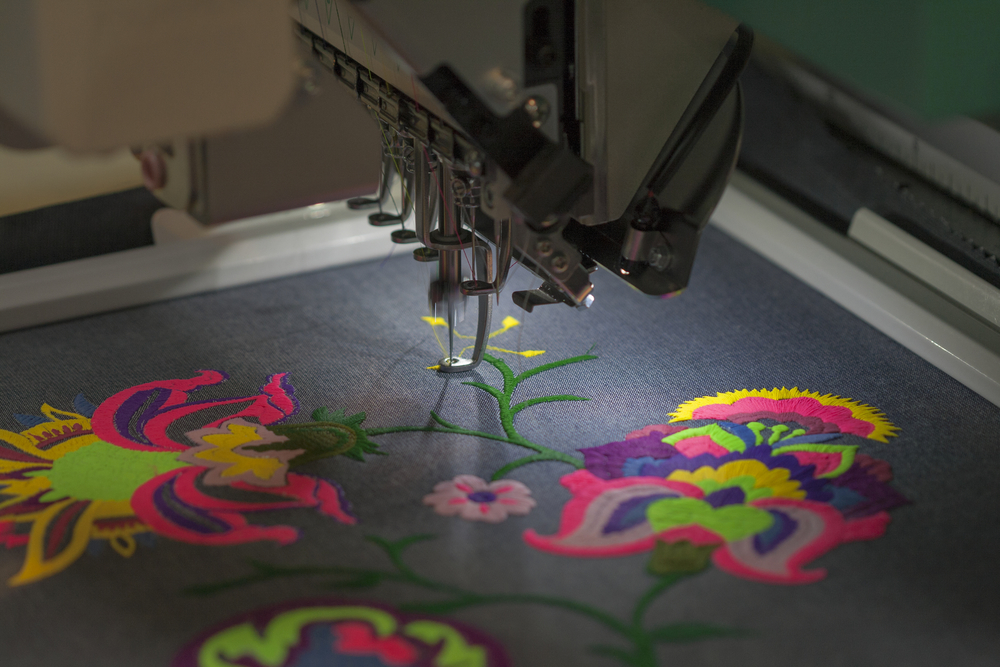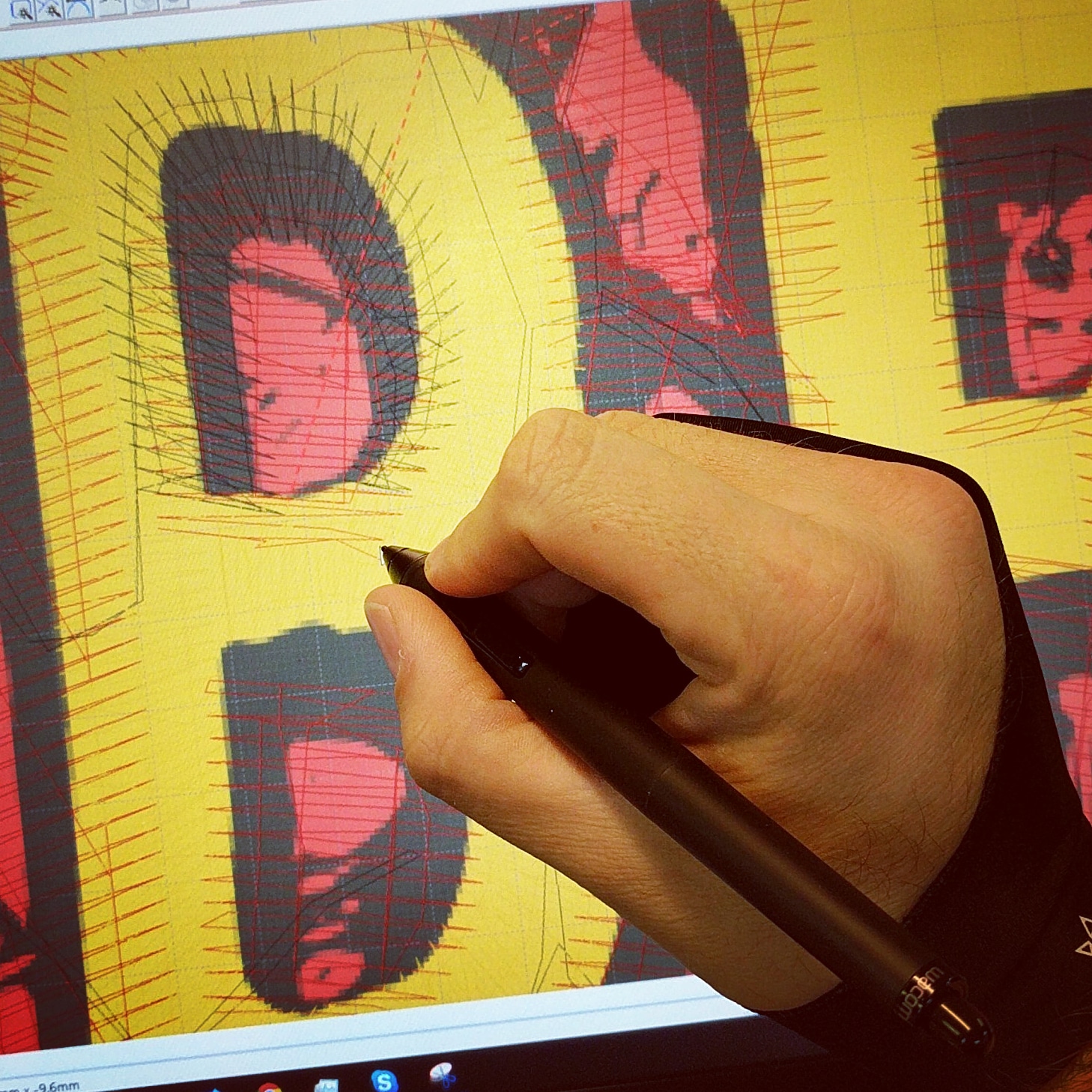Effective Digitizing for Embroidery: Quick Turnaround
Effective Digitizing for Embroidery: Quick Turnaround
Blog Article
Grasping the Needlework Digitizing Process: Your Ultimate Guide
Embroidery digitizing is a precise craft that needs precision and knowledge to equate detailed styles right into electronic styles for device needlework. As artisans embark on this journey to master the needlework digitizing process, a comprehensive understanding of the basics sets the foundation for excellence. However, beyond the primary expertise lies a realm of sophisticated software program, specialized devices, and nuanced strategies waiting to be explored. By delving into the subtleties of digitizing, one can unlock a globe of innovative opportunities and boost their needlework jobs to new heights.

Understanding Needlework Digitizing Basics
Needlework digitizing essentials develop the structure upon which intricate designs are translated right into machine-readable styles for precise sewing. This preliminary action in the embroidery digitizing procedure is important for ensuring that the final embroidered item is a devoted depiction of the original layout. Recognizing needlework digitizing essentials entails realizing essential ideas such as stitch types, stitch direction, thickness, underlay, and pull payment.
Stitch kinds play an essential duty in determining the aesthetic and textural end result of the embroidered style. By selecting the appropriate stitch kind, whether it be satin, fill, or running stitch, digitizers can accomplish the preferred impact and boost the general quality of the needlework. Furthermore, stitch instructions influences the circulation and measurement of the design, while thickness establishes the spacing and insurance coverage of the stitches.
In addition, rug stitching offers security to the style by securing the textile and protecting against distortion throughout the embroidery procedure. Pull settlement is another important consideration to neutralize the all-natural tendency of textile to contract when sewn. Mastering these embroidery digitizing fundamentals is essential for producing professional-quality embroidered products.
Picking the Right Digitizing Software Program
Selecting the proper digitizing software is a vital choice that considerably impacts the performance and quality of the needlework digitizing procedure. Digitizing for Embroidery. When choosing the right digitizing software application, it is necessary to think about variables such as the complexity of designs you plan to develop, the user-friendliness of the software, the degree of customer support supplied, and the compatibility with your embroidery device
There are various digitizing software program alternatives offered in the marketplace, varying from basic programs for beginners to innovative software program for specialist digitizers. Some popular selections consist of Wilcom EmbroideryStudio, Hatch Needlework Software, and PulseID. These software plans supply a wide variety of devices and features to help you create elaborate styles effortlessly.
Before deciding, it is suggested to check out the different software program options with totally free tests or demonstrations to determine which one finest suits your requirements. In addition, reviewing testimonials and looking for recommendations from experienced digitizers can give useful insights into the staminas and weak points of each software application bundle (Digitizing for Embroidery). By thoroughly YOURURL.com reviewing your demands and contrasting the features of different digitizing software application, you can make an informed option that boosts your needlework digitizing operations
Digitizing Tools and Strategies

Optimizing Style Setup for Needlework
Grasping the details of layout setups is basic in attaining optimum cause the needlework digitizing procedure, structure upon the foundation laid by recognizing digitizing tools and methods. When enhancing style settings for embroidery, it is necessary to think about elements such as stitch type, density, rug, pull compensation, and registration. Sew kind option influences the general look of the style, with choices like satin, fill, and running stitches providing different appearances and results. Thickness refers to the spacing and density of stitches, influencing the style's coverage and resilience. Proper padding sewing offers stability and protects against textile distortion, particularly for complex layouts or on elastic materials. Draw payment adjusts for textile stretch during stitching, making certain exact design duplication. Registration settings line up different components of the design accurately, keeping overall website link layout stability. By fine-tuning these layout settings, embroiderers can enhance the top quality and precision of their stitched developments.

Troubleshooting Common Digitizing Issues
When encountering typical digitizing issues during the embroidery procedure, it is important to recognize the root creates and implement efficient services quickly. One usual problem is stitch thickness concerns, where stitches may be as well thick, causing the material to tighten, or too thin, resulting in voids in the design. Changing the stitch thickness setups in the digitizing software can assist solve this concern.
Another regular obstacle is string breaks during the embroidery procedure. This can take place as a result of various reasons such as inaccurate stress settings, dull needles, or utilizing low-grade string. Making certain proper maintenance of the embroidery maker, consisting of normal needle changes and tension adjustments, can lessen the event of string breaks.
Moreover, design enrollment mistakes can result in misaligned elements within the embroidery layout. Inspecting the style positioning in the digitizing software program and making essential changes prior to sewing can aid in preventing this concern. By resolving these usual digitizing concerns without delay and successfully, you can make sure a smoother needlework procedure and high-grade ended up items.
Final Thought
To conclude, grasping the embroidery digitizing process requires a strong understanding of the essentials, the appropriate selection of software application, and understanding of tools and techniques. Optimizing design settings and fixing usual digitizing concerns are crucial action in making sure high-grade needlework results. By following these actions carefully, one can achieve accuracy and effectiveness in the digitizing process.
Report this page